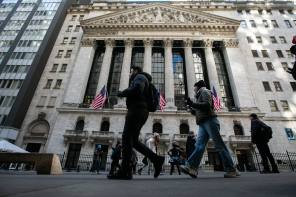
Despite the relatively muted returns on equities over the past year, I believe that for stock-pickers who invest for future growth, there will be opportunity, even given the current lower growth environment.
It is clear that as we enter 2015, the investment backdrop is probably more uncertain than at any time since the global financial crisis of 2008. Markets then fell as concerns abounded about the systemic risks to the global financial system, following the bursting of the US housing bubble, a European sovereign debt crisis and the threatened collapse of many large global financial institutions. However, for long-term valuation-focused managers, the huge market dislocation provided a rare opportunity to invest in superior businesses at very cheap valuations.
Persistently weak economic growth and an increase in geopolitical risk will provide the investment backdrop for many years to come. UK non-financial sector debt levels remain high at around 275 per cent of GDP. Governments, banks and also consumers still have a long road ahead of them in terms of deleveraging their own balance sheets. This process is a huge constraint on the growth of any economy as cash is saved or used to pay down debt while credit availability remains very constrained.
While the lower oil price does provide a fillip for global growth, it could also have an effect on financial stability. In the US high yield bond markets, US oil and gas accounts for 13 per cent of outstanding debt, while in the UK, the sector is the largest dividend payer, with over £13bn forecast to be distributed in 2015. If oil prices of US$40 to $50 a barrel were to persist, then these payouts would become very vulnerable, as even at higher oil prices many of these companies have not been covering their dividends from current cashflows.
Furthermore, inflation continues to fall in developed economies and the recent oil price decline will only exacerbate this fall. A combination of low growth and low inflation could highlight the vulnerability of highly indebted nations and corporates alike. Low bond yields push up the value of pension deficits and with limited growth on the assets side it may be that companies are obliged to increase their cash contributions to pensions. This in turn reduces their ability to invest that cash for growth.
Policy support from central banks remains in place and markets still retain confidence that regulators will do whatever is required to prevent a negative outcome. Europe, led by the European Central Bank, just announced a €1.1trn (£826bn) QE programme on 22 January (due to start in March), although the US Federal Reserve and the Bank of England’s monetary policy committee are on hold with an expectation of actually raising bank rates very slowly from here. When this will actually happen is being pushed further out as inflation and growth slows.
The real risk from here, in our view, is deflation, and with interest rates so low and serious questions being asked about the ability of QE to stimulate growth, the macroeconomic outlook remains very uncertain. QE was originally designed as an unconventional monetary policy to help prevent the systemic collapse of the global financial system. It was, and is, the largest experiment in monetary policy ever undertaken and six years after its launch, the debate remains as to whether it can really stimulate growth. With long-term interest rates already so low, will central banks be ultimately ‘pushing on a string’?
Finally, the outlook is complicated further by the UK general election. We believe the most likely outcome is a hung parliament. However, the collapse of the Liberal Democrat vote, the rise of UKIP and the massive swing from Labour to the Scottish Nationalists in Scotland means it may be unlikely that a two-party coalition will be able to be formed. My prediction will be that prime minister David Cameron will hope his Conservative party wins a larger share of the public vote than Labour. This will give him the mandate to try and form a Conservative minority government. This can only mean widespread uncertainty as a minority government is inherently unstable and a second general election would be likely to follow later in 2015.
Yet while the macro outlook is uncertain, valuations in the equity market are at best fair value or, in a worsening economic outlook, could be classed as expensive. There remains little room for disappointment in many companies’ share prices and so 2015 will be as much about avoiding the profit warnings as finding the companies that can deliver strong returns.
So in a world of significant uncertainty, where valuations leave little room for disappointment, fund managers’ focus is on finding those companies that can grow profits in the next five years. No longer can one rely on the rising tide to lift all boats. With £220bn of cash sitting on company balance sheets in the UK, it will be those companies that allocate that capital effectively to drive growth that will be the winners.
Simon Brazier is portfolio manager of the Investec UK Alpha Fund
Key points
* For stock-pickers who invest for future growth, in 2015 there will be opportunity, even given the lower growth environment.
* While the lower oil price does provide a fillip for global growth, it could also have an effect on financial stability.
* Markets are seeing a return to a more normalised environment where companies must invest their cashflows to generate growth.



